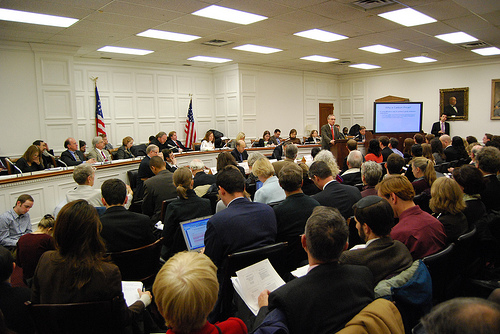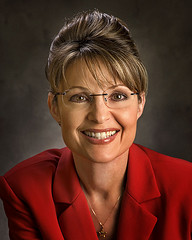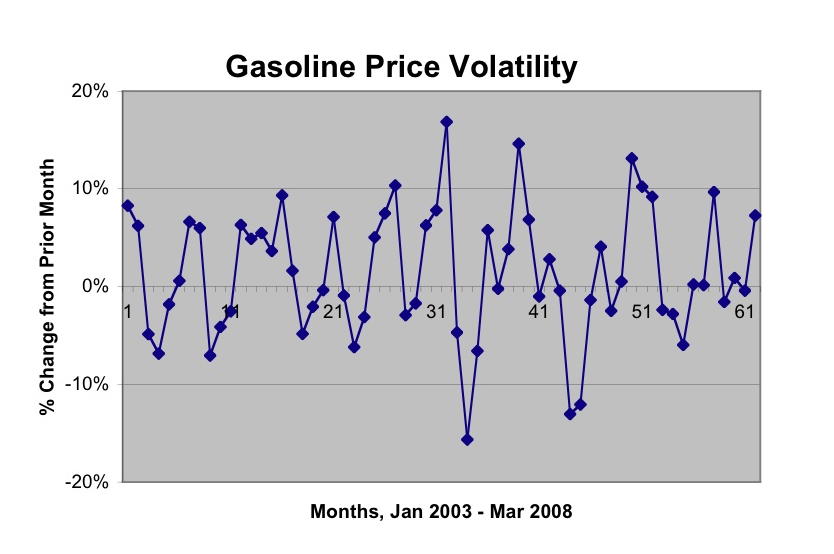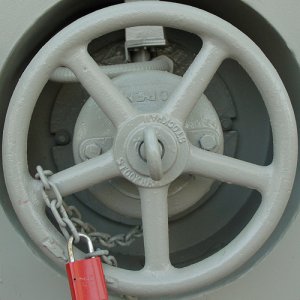Reported by CTC Washington representative James Handley. Watch this space (and see postscript below) for CTC’s analysis of the USCAP "Blueprint." Meanwhile, read these parallel critiques of USCAP:
- Joseph Romm of the Center for American Progress, via his Climate Progress blog, NRDC and EDF endorse the weak, coal-friendly, rip-offset-heavy USCAP climate plan.
- Statement by Robert Shapiro, director, U.S. Climate Action Task Force, "Policy Experts on U.S. CAP Endorsement of Cap-And-Trade: Right Intent, Wrong Policy — Climate Task Force supports carbon tax as best policy to reduce nation’s greenhouse gas emissions"
- Greenpeace Staff Blog: CEOs Guilty of Crimes Against Humanity Seek A Plea Bargain.
The U.S. Climate Action Partnership unveiled its cap-and-trade-based Blueprint for Legislative Action to a half-empty House Cannon Caucus Room Thursday morning. Arriving at the 9 a.m. event, attendees viewed a podium in front of an array of 18 chairs (each with bottled water) marked with names of CEOs and heads of EDF, NRDC, Pew Center, Nature Conservancy and WRI.
At 9:20, the suited “chorus” filed in, taking their assigned places. General Electric CEO Jeffrey Immelt introduced what he described as a “diverse panel” of CEOs and NGO heads. (All but Ursula Burns of Xerox is white; all but three are male. All seemed past the half-century mark.)
 Each had a brief speaking role. Jonathan Lash of the World Resources Institute stressed cap-and-trade’s “flexibility and predictability,” saying the blueprint addresses impacts on consumers and includes provisions for emissions offsets to “limit volatility.”
Each had a brief speaking role. Jonathan Lash of the World Resources Institute stressed cap-and-trade’s “flexibility and predictability,” saying the blueprint addresses impacts on consumers and includes provisions for emissions offsets to “limit volatility.”
According to the Environmental Defense Fund’s Fred Krupp, “A mandatory cap is the backbone” of USCAP’s proposal to reduce US greenhouse gas emissions from 2005 levels by 80% by 2050, with half the reductions occurring by 2030. Charles Holliday of DuPont said the plan would maintain competitiveness of U.S. firms. David Crane of NRG Energy touted its “fairness” in “spreading costs through the economy.” “All components of the plan are linked,” Pew’s Eileen Claussen proclaimed. To “manage price spikes” she pointed to provisions for “banking of emissions allowances,” availability of “strategic verifiable offsets” and a “reserve pool.”
John Deere’s Robert Lane stressed offsets -– credits for 1.5 billion tons of CO2 reduction activities that would not otherwise be undertaken in sectors not subject to the cap. He noted that USCAP’s blueprint allocates “free permits initially… phasing them out.” John Rowe of nuclear giant Exelon trumpeted renewable portfolio standards for utilities to encourage building “the lowest carbon energy” — nuclear. He said 40% of the free allowances would go to electric utilities at the distribution level — where, he asserted, cost savings would be passed to consumers.
Burns described Xerox’s early GHG emissions reductions and pointed out the blueprint’s rewards for early actions. Frances Beinecke of the Natural Resources Defense Council called the blueprint a way to “help solve both the economic crisis and the climate crisis” by “regulating all major sources, while funding energy technology research and deployment,” a “stimulus,” she said, along with clean fuel vehicle regulations.
Jim Rogers of Duke Energy, the third largest U.S. coal-burner, asserted that “We must find a way to remove CO2 emissions from coal,” noting accelerating construction of coal fired power plants in China. He touted the blueprint’s use of auction revenue to fund Carbon Capture and Sequestration research, funding “not subject to the whims of Congress.” He said the blueprint would “require” all new coal fired power plants after 2015 to capture at least 50% of carbon.
Peter Darbee of Pacific Gas & Electric noted that energy-efficiency is the most cost-effective energy “source” and the cheapest way to reduce GHG emissions, costing about 2 cents per kilowatt-hour. The blueprint urges Congress and states to enact regulatory standards, expand rebates for buildings that outperform codes, and enact tax and regulatory incentives for consumers to improve efficiency. Darbee urged “decoupling” of utility earnings from power generated to encourage them to help customers conserve. James Mulva of Conoco-Phillips explained that the USCAP blueprint makes fuel providers “responsible” for reductions in the transportation sector and that it includes performance measures for vehicles.
Noting that forest destruction generates 20% of global GHG emissions, Mark Tercek of Nature Conservancy applauded the blueprint’s “verifiable” offsets to credit forestry projects to capture CO2. George Noland of Siemens pointed to the plan’s goal of 40-45% reduction of GHG emissions from commercial buildings through design improvements and smarter technology. Jeff Sterba of PNM Resources touted USCAP coalition’s diversity and consensus. Lewis Hay of Florida Power advocated measures to put renewables on a “level playing field,” and Preston Chiaro of mining combine Rio Tinto argued that the plan would motivate other governments to follow.
Reporters asked about the cost of the plan. Claussen contended that its costs can’t be assessed in isolation because the plan would revitalize a new economy — for example, by encouraging building of wind power. I asked the panel why the blueprint didn’t follow President-elect Obama’s pledge of 100% auction of permits and instead sought permit giveaways ("allowances"). Darbee replied that the free permits would go to electricity distribution utilities, which would ensure that consumers benefited from them. A reporter from Time magazine asked what the target carbon price would be; Claussen said a Carbon Market Board would decide, and that the plan is intended to avoid “a dash for (natural) gas.”
Another reporter asked about EPA authority and federal preemption of state efforts already underway to reduce GHG emissions; Krupp replied that they had not taken a position on EPA or preemption. Asked if coalition members will support the plan jointly or lobby individually, the panel indicated that there will be agreements on some elements and divergences on others.
WRI’s Lash concluded the session: “The economy will recover but without serious steps, the climate will not.” The panel then rushed out to join the first climate legislation hearing of the 111st Congress, before Rep. Waxman’s Energy & Commerce Committee.
Photo: Flickr / James Morrison.
Postscript, after reading USCAP’s vague "blueprint" (few numbers, no graphs):
Does Thirst for Offsets, Allowances Unite "Diverse" USCAP Coalition?
Offsets (1.5 billion tons domestic and 1.5 billion abroad) overwhelm the cap. When the smoke clears, USCAP’s blueprint amounts to a source of funds for offsets. Retaining tropical forests as carbon sinks instead of burning them is crucial (and deserves funding), but USCAP would sell "indulgences" for U.S. emissions without "repentance": no reason to reduce. (See Hill Heat’s graph showing the huge bubble of additional emissions that USCAP’s offsets would accommodate.)
USCAP’s free allowances to downstream electricity distribution utilities would mute (obliterate?) the price signal, reducing incentives for electricity users to conserve and upgrade.
A "cap with free allowances" worked for the acid rain SO2 cap-and-trade program by pressing utilities to install scrubbers and shift to low sulfur coal without passing SO2 permit costs through to consumers. CO2 is different– we don’t have a way to burn coal without producing CO2. (Yes, we might someday, but even DOE’s rosy estimates say capture and sequestration would require ~ 1/3 more fuel.)
Conservation is the cheapest "source" of energy and GHG reductions. Gradually-rising prices, via a tightening cap without free allowances, or better yet a rising carbon tax, would push all levels of the economy to become the laboratory for efficiency and low-carbon innovation. For a strong enough price signal without crippling the economy, an offsetting tax shift or "dividend" is needed to dampen the "income effect" (but not the incentive to conserve or substitute) of that price hike. That’s where auction money (or carbon tax revenue) should go: all the way downstream to households.
In short: Huge offsets mean USCAP’s plan wouldn’t press U.S. industry to shift to renewables (e.g., by building wind capacity) and its free allowances mean consumers wouldn’t have reason to reduce demand anytime soon. Pretty close to a "nothing-burger."

 The public briefing for members of Congress and their staffs was sponsored by the Environmental and Energy Study Institute (EESI), the Carbon Tax Center, the Climate Crisis Coalition, Friends Committee on National Legislation and Friends of the Earth.
The public briefing for members of Congress and their staffs was sponsored by the Environmental and Energy Study Institute (EESI), the Carbon Tax Center, the Climate Crisis Coalition, Friends Committee on National Legislation and Friends of the Earth. Which naturally brings to mind the
Which naturally brings to mind the  Clearly, a change is in the air. America is growing up, as I argued in
Clearly, a change is in the air. America is growing up, as I argued in  I’ve been tracking official monthly data on U.S. gasoline consumption for the past five years, and compiling the numbers in
I’ve been tracking official monthly data on U.S. gasoline consumption for the past five years, and compiling the numbers in  The year-long effort to enact congestion pricing in New York City had a lot going for it:
The year-long effort to enact congestion pricing in New York City had a lot going for it: In recent years, New Mexico Democratic Sen. Jeff Bingaman has become the lawmaker most linked to this cause. His version of the safety valve emerged in 2005 in a legislative proposal that created a price cap on carbon. It would guarantee that American companies pay no more than $12 for every ton of carbon dioxide they release into the atmosphere. This rate would go up five percent annually beyond inflation.
In recent years, New Mexico Democratic Sen. Jeff Bingaman has become the lawmaker most linked to this cause. His version of the safety valve emerged in 2005 in a legislative proposal that created a price cap on carbon. It would guarantee that American companies pay no more than $12 for every ton of carbon dioxide they release into the atmosphere. This rate would go up five percent annually beyond inflation. The article ends months of speculation that Bloomberg, a self-made billionaire who has emphasized a managerial, non-partisan approach to governing, would enter the race as an independent.
The article ends months of speculation that Bloomberg, a self-made billionaire who has emphasized a managerial, non-partisan approach to governing, would enter the race as an independent. While Nader has been roundly criticized and even ridiculed as a spoiler and perennial candidate (Nader was the Green Party candidate for president in 1996 and 2000, and he ran as an independent in 2004), his campaign platform includes unambiguous support for a carbon tax. “Adopt a carbon pollution tax” is Issue #6 on Nader’s campaign issues page,
While Nader has been roundly criticized and even ridiculed as a spoiler and perennial candidate (Nader was the Green Party candidate for president in 1996 and 2000, and he ran as an independent in 2004), his campaign platform includes unambiguous support for a carbon tax. “Adopt a carbon pollution tax” is Issue #6 on Nader’s campaign issues page,